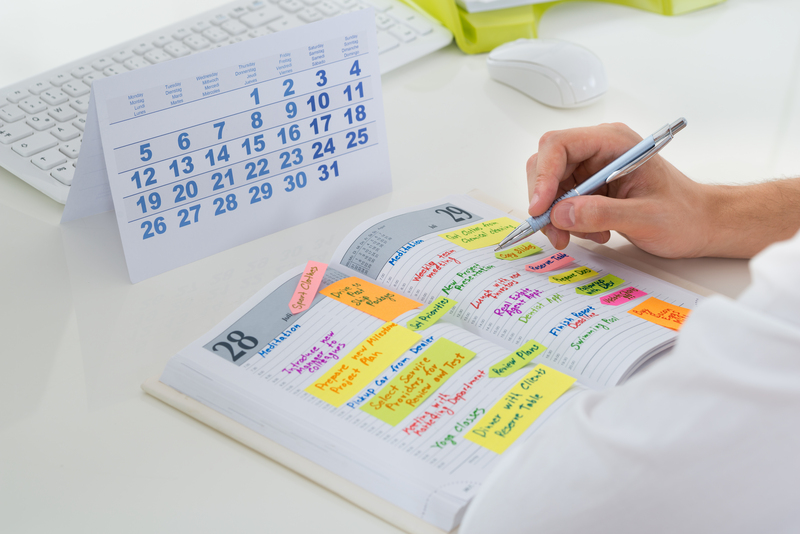How to Shift Bulky Items When You're the Only One Around
Dealing with moving heavy objects by yourself might initially seem like an impossible task. Whether you're reorganizing your living room, managing a DIY move, or rearranging your garage, knowing how to shift bulky items when you're the only one around is an invaluable skill. In this comprehensive guide, we'll explore practical strategies, helpful tools, essential safety tips, and actionable advice for anyone faced with the challenge of moving large items solo.
Why Move Bulky Items Alone?
There are countless reasons you might find yourself needing to move heavy or oversized items without help:
- Sudden Furniture Delivery: You've purchased new items and need to shift things before help arrives.
- Living Alone: You may not have roommates, family, or friends nearby to assist.
- Immediate Need: Time-sensitive situations like water leaks or blocked walkways require quick action.
- DIY Enthusiast: You prefer to handle home projects on your own.
Whatever your reason, learning techniques for shifting heavy objects solo can save you time, money, and plenty of frustration.

Preparation is Key: Plan Before You Move Bulky Items Alone
Before attempting to move a heavy piece of furniture or appliance solo, planning is crucial to ensure your safety and prevent property damage. Take the following preparatory steps:
1. Assess the Object
- Size & Weight: Estimate how heavy and bulky the item actually is. Some objects may appear heavier than they are (e.g., hollow cabinets), while others can be deceptively dense.
- Shape: Irregular or awkwardly shaped items can be harder to move than those with straight lines or balanced weight.
- Detachable Parts: Can the item be disassembled into lighter, easier-to-carry pieces?
2. Map Out Your Path
- Clear Obstacles: Remove tripping hazards, rugs, or other furniture from your route.
- Doorway Measurements: Check that the item can fit through doorways and hallways without getting stuck.
- Staircases & Steps: Identify and plan for any elevation changes or tight corners.
3. Gather the Right Equipment
- Furniture Sliders (or Gliders): These allow you to easily push heavy items across floors without damaging them.
- Dollies & Hand Trucks: Ideal for items with a flat base or those that can be stacked.
- Lifting Straps: Designed to redistribute weight and reduce strain on your back.
- Protective Gear: Gloves, supportive shoes, and even knee pads for stability.
- Blankets & Towels: Used as padding for floors or fragile corners.
Smart Lifting Techniques for Moving Heavy Objects Alone
Safely lifting and shifting bulky items solo calls for proper techniques to minimize injury risk and maximize efficiency. Here's how:
Use Your Legs, Not Your Back
- Bend at your knees, not your waist.
- Keep your back straight and your feet shoulder-width apart.
- Lift smoothly--avoid jerking or twisting motions.
Keep the Object Close
- Hold the item close to your torso. This reduces strain and improves balance.
Slide Instead of Lifting When Possible
- Place furniture sliders or thick towels under heavy objects and gently push them across the floor.
Don't Rush the Process
- Take small steps and rest if you feel strain or fatigue.
- If something feels unsafe, stop and reassess.
Best Tools for Solo Heavy Lifting and Moving
Having the right **equipment for moving large items by yourself** can make the difference between a smooth move and a trip to the doctor.
Furniture Sliders
- Available for both hard floors and carpets.
- Place under the corners of furniture for effortless gliding, protecting both floors and your back.
Hand Truck or Dolly
- Perfect for stacked boxes, appliances, or flat-bottomed furniture.
- Lean the item onto the base and wheel it to your destination.
Lifting and Moving Straps
- Distribute weight between your shoulders and core instead of your back.
- Enable solo lifters to handle awkward items more securely.
Work Gloves and Grippers
- Improve your grip and protect your hands from scrapes or blisters.
Protective Padding
- Wrap fragile or pointy items in old blankets, towels, or bubble wrap to shield floors, walls, and the item itself.
How to Shift Different Types of Bulky Items Alone
Not all large objects are created equal. Here's a quick rundown of how to move different types of heavy or unwieldy household items:
Sofas and Couches
- Remove cushions, legs, or arms if possible to lighten the load.
- Use sliders on each corner and push gently, using your legs and core for power.
- If narrow doorways are involved, stand the sofa on one end and "walk" it out in a controlled manner.
Dressers and Chests
- Empty all drawers and carry them separately.
- Carefully tip one side to slip sliders underneath, then push the dresser across the room.
Refrigerators and Appliances
- Unplug and defrost before moving.
- Secure or remove detachable components like shelves or doors.
- Use a dolly for transport, strapping the appliance securely in place.
Mattresses
- Fold (if possible) and tie with rope or use a mattress bag for grip.
- Prop upright and "shimmy" end over end along your intended path.
Tables
- Remove legs if possible and carry sections separately.
- If moving in one piece, turn tables sideways onto a blanket and slide.
Essential Safety Tips for Shifting Heavy Items Alone
- Never attempt to move something too heavy for you alone. Injuries occur quickly with loads that are unmanageable.
- Wear proper footwear: Shoes with non-slip soles can prevent falls.
- Use gloves: Protect hands from splinters, heat, or chemical residue.
- Check surroundings: Watch for pets, children, and household hazards.
- Take breaks: Preempt fatigue and injury, especially on stairs.
- If necessary, call for backup: Sometimes it pays to be safe--don't hesitate to ask for help if things seem risky.
Creative Hacks for Solo Moving
In addition to specialized tools, a few household hacks can make solo item moving even easier:
- Cardboard as a Sled: Place a flattened cardboard box under lighter items and slide them across hard floors.
- Plastic Bags on Furniture Legs: Reduce friction by wrapping chair or table legs in sturdy bags.
- Old Towels as Levers: Slide under an object, then pull the towel like a sled over smooth surfaces.
- Belt Handles: Loop a sturdy belt under a box or appliance for a makeshift handle and improved grip.
Moving Bulky Items Upstairs or Downstairs Alone
Stairs are the trickiest obstacle when it comes to moving heavy objects single-handedly. If you have to maneuver items up or down steps, keep these guidelines in mind:
- Strip Down Weight: Detach all possible accessories, doors, or drawers.
- Use Lifting Straps or a Rope: Helps with control, especially when going down stairs.
- Move Slowly: Take one step at a time and keep the load balanced against your body.
- Anchor and Leverage: If the item must be pulled instead of carried, use a sturdy rope and anchor it securely at the top of the stairs. Wear gloves for better grip.
- Never rush: If you feel unstable, stop instantly and reassess your plan. If at all in doubt, seek help.
What to Do if You Get Stuck
Sometimes, despite your best prep and technique, an item might still get stuck or prove too heavy. Here's what to do:
- Set the Item Down Quickly and Securely: Lower the object to minimize injury risk.
- Reassess: Try a different path, more sliders, or change the angle of approach.
- Take a Break: Often a short rest reveals a better solution.
- Enlist Help: Don't be afraid to call a family member, neighbor, or even a professional moving service for assistance.
How to Avoid Damaging Your Floors and Walls
Bulky objects can easily scuff walls and gash floors if not carefully managed:
- Use Sliders, Blankets, and Padding Everywhere: Especially at corners and tight passageways.
- Lift Don't Drag on Delicate Surfaces: For hardwood, tile, or marble floors, lifting for short bursts avoids scratching.
- Protect Door Frames: Wrap towels or foam on sharp edges during tight maneuvers.

Assistance Alternatives When You're Alone
Help doesn't always have to mean a second pair of hands! Consider these alternatives:
- Professional Movers: For extra-large or valuable items, hiring pros is often the safest choice.
- Rent Equipment: Hardware stores often rent out dollies, carts, and lifting straps designed for solo movers.
- Community Help: Many neighborhoods have local handyman services willing to help out for an hourly fee.
Final Thoughts: Master the Art of Solo Heavy Lifting
Learning how to shift bulky items when you're the only one around is all about planning, using the right techniques, and prioritizing safety. With smart preparation, proper equipment, and careful execution, you can move heavy things by yourself with less stress and zero damage. Remember: when it comes to safely moving large or heavy items solo, never be afraid to ask for help if things get too tough.
Key takeaways:
- Always assess and plan before moving anything big.
- Use proper lifting and sliding techniques to avoid injuries.
- Invest in or rent equipment designed for heavy shifting.
- Take your time, prioritize your safety, and protect your home.
- If ever in doubt, seek professional assistance.
By following these expert tips and techniques, you'll develop confidence and competence every time you're faced with moving large or heavy items alone. Happy shifting!



